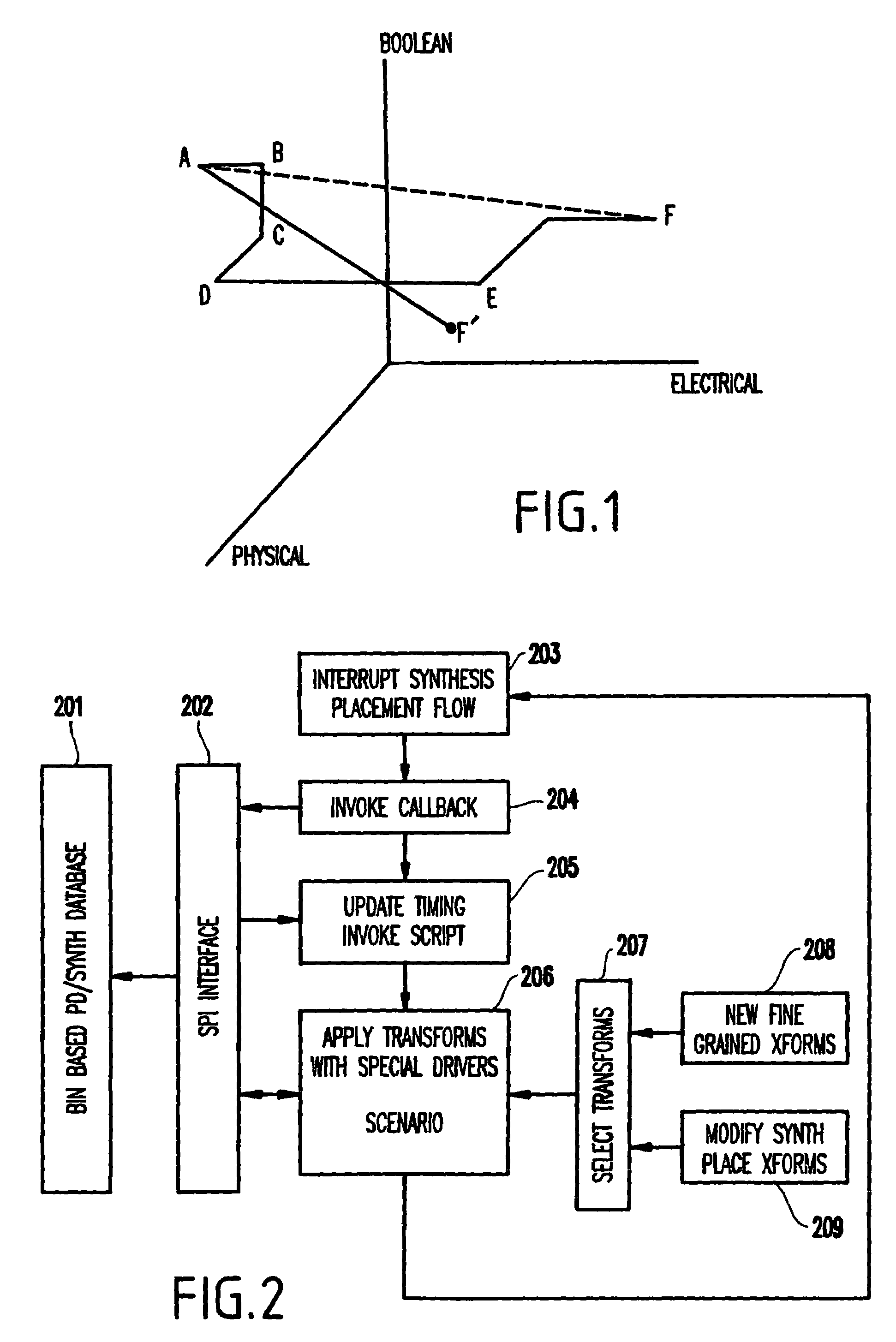Method and apparatus for applying fine-grained transforms during placement synthesis interaction
a technology of placement synthesis and transformation, applied in the field of methods and apparatus for applying fine-grained transformations during placement synthesis interaction, can solve the problems of difficult to design logic, difficult to perform these steps in combination at the same time, and inability to achieve the effect of improving design
- Summary
- Abstract
- Description
- Claims
- Application Information
AI Technical Summary
Benefits of technology
Problems solved by technology
Method used
Image
Examples
first embodiment
[0051]Referring to FIGS. 2–7, a first embodiment of the present invention will be described below.
[0052]As mentioned above, the invention examines a plurality of domains concurrently in finding an optimum design. That is, the inventive transformational placement and synthesis approach creates a sequence of more and less granular placement and netlist modification transforms (e.g., steps which change the design space from one point to another; there are boolean transforms, electrical transforms, and placement / physical transforms) thereby to create a converging design closure process, starting from just a netlist without initial placement.
[0053]The placement function is decomposed into a set of placement transforms each addressing a specific phase of the placement problem. Each placement step becomes just another transform that changes the design space, in this case the placement of cells. These placement transforms can be freely mixed and matched with the traditional logic synthesis ...
PUM
 Login to View More
Login to View More Abstract
Description
Claims
Application Information
 Login to View More
Login to View More - R&D
- Intellectual Property
- Life Sciences
- Materials
- Tech Scout
- Unparalleled Data Quality
- Higher Quality Content
- 60% Fewer Hallucinations
Browse by: Latest US Patents, China's latest patents, Technical Efficacy Thesaurus, Application Domain, Technology Topic, Popular Technical Reports.
© 2025 PatSnap. All rights reserved.Legal|Privacy policy|Modern Slavery Act Transparency Statement|Sitemap|About US| Contact US: help@patsnap.com



